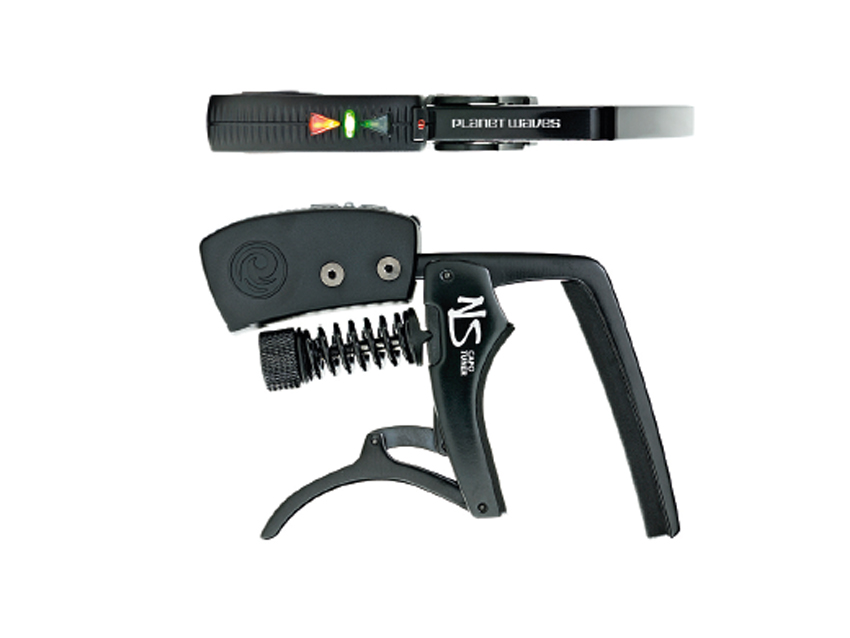MusicRadar Verdict
Ideal for committed capo users who don't have an existing pedal or headstock chromatic tuner.
Pros
- +
Concept. Construction. Ease of use.
Cons
- -
No note display. Concerns over accuracy.
MusicRadar's got your back
This brand new addition to the Ned Steinberger-designed series of Planet Waves guitar accessories combines two existing products, the Headstock Tuner and Dual Action Capo, into a single unit.
On paper at least, the concept is close to genius in its simplicity. The tuner section is ergonomically designed in order to maintain the in-use comfort of the capo's trigger mechanism. There's also a micro-adjustment tension wheel to get things bang on.
The tuner's accuracy is based on piezo technology and the display comprises 'lesser than' and 'greater than' LEDs either side of a central in-tune light.
What's missing is a depiction of the actual note that's currently being tuned, so you'll need to know that the guitar is pretty close to the note you want. Indeed that is its intended use - fine tuning when shifting capo positions, rather than tuning up from scratch.
In Use
When the capo tuner is in place on the neck, the display is in just the right place. There's no way of adjusting the fascia, but no need - it's conveniently sited. It's wide enough to fit six and 12-string electric and acoustic guitars.
If you use a capo, you'll know that the act of even placing it on the neck involves some kind of tuning tweak in most cases. The NS Capo Tuner addresses that by offering you instant chromatic reference to the note to which you're closest.
It can't mute your signal, of course, and it does require that your guitar is pretty much in tune to begin with.
Want all the hottest music and gear news, reviews, deals, features and more, direct to your inbox? Sign up here.
Simon Bradley is a guitar and especially rock guitar expert who worked for Guitarist magazine and has in the past contributed to world-leading music and guitar titles like MusicRadar (obviously), Guitarist, Guitar World and Louder. What he doesn't know about Brian May's playing and, especially, the Red Special, isn't worth knowing.
